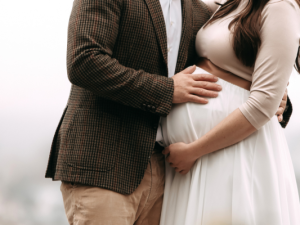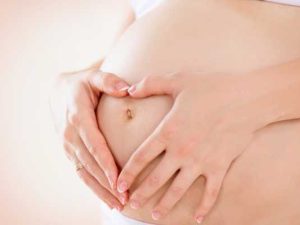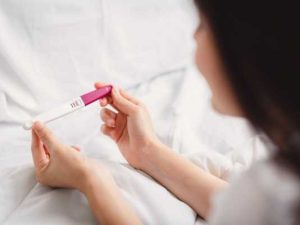Getting pregnant naturally with endometriosis
Transcription :
So this past week on Instagram, I got this message that reads, “Hi, lost my ovary from endometriosis. Do I still have a chance of getting pregnant?”
So I thought that, instead of just answering her there on Instagram, that I would answer her right here on FertilityTV with all of you because I thought that my answer could be helpful for many others who are also dealing with endometriosis and maybe in a similar situation to hers. So that’s what this video is about. Keep watching to learn more.
Hi, I’m Dr. Marc Sklar, also known as the fertility expert, and I’ve been working with couples for close to 20 years through my online coaching programs and right here in San Diego at my clinic. So if you’re local, come and say hello.
The sponsor of this week’s video, before we get into the meat of this video, is Fairhaven Health. They put out a lot of amazing supplements, one of which is my favorite lubricant called BabyDance. If you want more information on their products and BabyDance, use the link in the description below.
So endometriosis. Actually, Endometriosis Awareness Month was March. We just passed it, and so it’s only fitting that we are talking about it right now. Even though it is the beginning of April, it’s still an important topic and one that is much needed in terms of awareness and understanding and treatment, as we are dealing with fertility and everything that comes with it when we talk about reproductive health.
So endometriosis, how do you know if you have it, and more importantly, what are the symptoms to start with?
Well, endometriosis is an inflammatory issue and so with that, the main issue that we’re going to start to deal with is pain. That’s right. Now pain can come at various times and in various locations. So pain more specifically can come right around menstruation, right before, during or after menstruation. It even can come sometimes around ovulation, but more specifically around menstruation is more specific to endometriosis.
And that pain could be local to the uterus and ovaries, so right into the pelvic area. It can be low abdominal and intestinal. It can be in the low back. It can even be higher up. It can extend into vaginal pain and rectal pain.
The reason why you can have pain in all of these areas is because the tissue, the endometrium, which is the lining, the tissue inside the uterus, when a woman is menstruating, it can back-flow through the fallopian tubes, end up in the pelvic cavity and in the abdomen and it can spread to different parts of the body in different organs. It typically can adhere to the bladder and the intestines because of its proximity and how close they are to the uterus.
So those are the more common places that you might see it, but it can really extend all throughout the abdomen to various parts. So it’s really important that you are aware of where the pain is and, more importantly, when the pain comes, the timing in which it comes, because that could also be very telling in terms of an initial or preliminary diagnosis for endometriosis.
Additionally, something that is a telltale sign is spotting before you bleed. So spotting or bleeding before you actually have your real bleed and your full menstrual bleed is also an indicator for endometriosis.
While we’re talking about locations and pain, I do want to highlight that it can also lead to increased pain during intercourse, during a bowel movement or during urination because of those locations.
I did mention where those locations could be just a moment ago and so I think, again, it’s really important that you are aware of not only when you get that pain, but where you get it and how intense it is.
Now endometriosis does come in stages, so it doesn’t have to be extreme pain every time to be an indicator for endometriosis. It’s more that cyclical nature in terms of when it comes so around the menstruation time and where it’s located.
I have many other videos on endometriosis where I dive much deeper into this topic so if you want to check those out, feel free to check those out. We’ll put some of those links in the description below as well for you.
But the more common question that gets asked is, “Well, what’s the treatment? How do we handle endometriosis?” I’ll get back to that initial question that my follower on Instagram asked because it starts to play into what I’m going to discuss right now.
The initial recommendation typically that you’ll get from your OB GYN is going to be putting you on some sort of medication that is going to manage your hormones so like birth control or gonadotropins. These are going to basically suppress your hormones and like birth control really not allow you to have a full cycle. It’s that suppression of these hormones that you don’t have that cyclical nature of your cycle that doesn’t facilitate and enhance and support that endometriosis from occurring or spreading, and it really suppresses it so you don’t have that.
Because, again, we were talking about the endometriosis coming or you experiencing the discomfort, that inflammation and pain around menstruation. Well, if you’re not really getting a menstrual cycle because your hormones are being suppressed and controlled by the medication, then that is a very common way, an appropriate way from a medical perspective of how to handle it.
Another way that you can deal with the symptoms of endometriosis is pain medication like Advil or Tylenol. This, again, is only temporary because you’re using it when you have the discomfort, or expect it to come, to help mitigate the pain and allow you to handle it better, but it doesn’t get rid of it.
And, quite frankly, I should be clear on that, neither do the hormones that I just mentioned like birth control. That doesn’t get rid of the endometriosis because soon as you stop those medications you are going to experience, and you give it usually a little bit of time, you’re going to experience the endometriosis, that pain and inflammation again, so that doesn’t get rid of it.
The most acceptable way to manage the pain and theoretically get rid of the endometriosis, at least for a period of time, is through a procedure called a laparoscopy where they are removing that tissue, that inflammatory endometriosis so it’s not causing the discomfort that you’re experiencing.
Now, a laparoscopy is a very appropriate way to handle this. The positive is that a good surgeon will get rid of most of what is there, if not all.
Now, often what does happen on the negative side is it does return with time. So you want to take advantage of the time that you have after the procedure to try to conceive as quickly as possible. Then once you’re pregnant, you’re not having those hormonal fluctuations so it does help to keep it at bay as well for a period of time. But the quicker you can get pregnant after a laparoscopy, the better off you’re going to be as well.
Another treatment, which I don’t recommend by the way, but another option, especially if it’s very extreme in nature, stage four endometriosis or even more extreme than that, would be a hysterectomy which, again, for fertility purposes we don’t recommend, and I’m not a proponent of it, but I do want to list out those different treatment options.
Now, those are all medical treatment options from the Western conventional perspective. Let’s talk a little bit more about what you can start doing now at home to address these things from a more natural perspective.
Actually, I want to touch on two other pieces that I think are important as we’re talking about the conventional model before I jump into the natural side of things.
One is, once you’ve done these procedures, whether you’ve taken the medication or you’ve done a laparoscopy, then what do you do? Most often what they’re going to recommend is that you do IUI or IVF and so I do want to acknowledge those two pieces.
Coming back to this question that was asked on Instagram about one of the fallopian tubes being removed, well, what do we do? Well, I forgot to mention earlier that places where the endometriosis can show up aside from on the ovaries and on the uterus is on and in the fallopian tube. And if that endometriosis causes a lot of inflammation and scarring and blockages of the fallopian tube, it can be worthwhile to have that fallopian tube removed so it’s not causing any more pain. That inflammation, that infection is gone and that if that fallopian tube is not functioning properly, it’s no longer usable. So we’d rather get rid of it so it doesn’t cause any other issues and perpetuate that endometriosis. So in her case, she had that removed so then what are your options?
Well, if you still have one fallopian tube left, you can still conceive naturally. It might take you a little bit longer to conceive because you only have one functioning fallopian tube, but you have two hopefully healthy, good functioning ovaries that can still produce those follicles and release those eggs, which that one functioning fallopian tube can go ahead and grab those eggs from. So that is definitely an option.
If you’ve tried that for a period of time or, God forbid, they’ve had to remove both fallopian tubes, then your only option there is going to be IVF. Those are going to be the methods that are going to be most suited for you, given the circumstances and the time in which you want to take advantage of from the procedures being done so that you can maximize the procedure’s effectiveness with the removal of the endometriosis.
Okay, so what do we do naturally? That is why you guys typically follow me and watch me and learn from me is what are we going to do on the natural side to address the endometriosis in this situation? And for that woman who had one of her fallopian tubes removed, this still applies to you. You can still do all of these things.
The first thing that I do want to mention is that when we’re talking about endometriosis and all these procedures I just mentioned previously, they’re treating the symptom. Even the surgery, the laparoscopy, so to speak, is treating the symptom, meaning it’s taking care of the inflammation, the tissue, but it’s not addressing the underlying issues that might be contributing to that endometriosis being there and that’s really where I like to focus my attention on with all of you.
So as I’ve said many, many times, lifestyle and diet are essential on your natural path to conceive, and endometriosis is no different here so cleaning up your lifestyle. So what does that really mean?
Well, some of those basics are making sure you’re getting enough sleep and rest. If you’ve got a lot of inflammation, your body needs time to handle that and manage it, which means you need to rest and you need to make sure you get proper rest and recovery.
Two, in your lifestyle, what are other things that could be impacting the endometriosis and often those are environmental things. Whether they are chemicals that you clean with, chemicals and toxins you use as skincare products or personal hygiene products, whatever that might be, those are things that need to be cleaned up.
I like to recommend not using tampons and switching to pads if you haven’t done that and obviously switching to organic if you haven’t done that for either one of those. And then cleaning up those chemicals around your house that could be impacting your hormones and your endocrine system that we do know also contribute to that inflammatory process of endometriosis so I’d definitely like to address those.
There is, and I expand on this in other videos, there is this piece of your immune system that needs to be supported when we are dealing with endometriosis. So again, we want to make sure that we are eating right, taking care of ourselves, resting, exercise. All of these things reduce inflammation and support our immune system so we want to make sure that all of those ducks are in a row.
One of my favorite, favorite, favorite things to help treat endometriosis and manage the symptoms and help mitigate it and its spread is acupuncture. That’s right, acupuncture in Chinese medicine. So I’m a big fan of that when it comes to endometriosis and I highly, highly recommend that you look into that to help with those acute symptoms and those chronic symptoms as well.
Lastly, as everyone always wants, we’re going to talk about supplements because supplements from a natural perspective when we’re dealing with endometriosis are going to be really important here, and I want you all to start to think about it in this way.
So what are some of the things we need to do? We need to reduce inflammation, we need to increase circulation and we need to regulate our hormones.
Some of my favorite things to do to help manage and address the endometriosis are going to be along those lines so adding in your essential fatty acid, your fish oils to help reduce inflammation. Turmeric or curcumin is a great one here as well. I’m a big fan of proteolytic or systemic enzymes, like Neprinol is one of my favorite ones. So those are things that you can add in.
Again, from a Chinese medicine perspective, I’d also be adding in some additional Chinese herbs to help manage these symptoms and support or hopefully get rid of that endometriosis and inflammatory response as well.
So now I want to hear from all of you. That’s right. I want to hear your questions. But before you get to your questions, what did you find important and valuable from this video? What information did I share about endometriosis that you think you can start to incorporate or that you learned now that you didn’t know before? Comment below and let me know.
If you’ve got endometriosis, share your story. Let me know what that’s like for you, what’s worked, what hasn’t worked. I’d love to hear from you so comment below and let me know.
If you’ve got some questions around your fertility needs, maybe I’ll do a video on that just like I did for this one, but you’ve got to comment and let me know. So post your questions down below and I’ll do the best to answer them, or create a video just like this one for all of you.
If you like this video, give me a thumbs up. If you’re not a subscriber to my YouTube channel, then you need to be so hit that button to subscribe and get notified when I put on a new video for all of you. Until the next video, stay fertile.




